Have you found yourself perpetually modifying the display settings for the best brightness and contrast settings for your PC? Whether you are a gamer, designer, or just an everyday user who’s into video streaming and internet browsing, perfecting these settings can drastically improve the quality of your overall viewing experience.
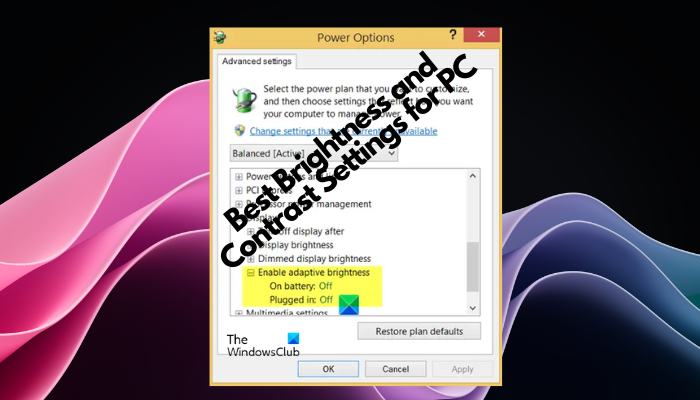
What brightness and contrast settings are best for gaming?
Optimal brightness and contrast settings for gaming vary based on personal preference and game type. However, a general tip is to adjust the screen brightness to a level where details are visible without straining your eyes and adjust contrast to enhance game visuals without washing out the image. Experiment with settings for the best experience.
Best Brightness and Contrast Settings for Windows 11/10
Although here we recommend the best monitor settings for your PC for gaming and your eyes, the actual settings depend greatly on the user’s comfort. It can be different for different users. Moreover, an optimal level of brightness and contrast settings also depends on the monitor in use and other external factors like the surrounding light, etc.
So, while you can adjust the screen brightness on your PC to an optimal level, in most cases, it does not help. Therefore, here we have a rundown of some techniques to help you with the best monitor settings for your PC.
- Tweak the brightness settings
- Modify the contrast settings
- Other techniques to follow
1] Tweak the brightness settings
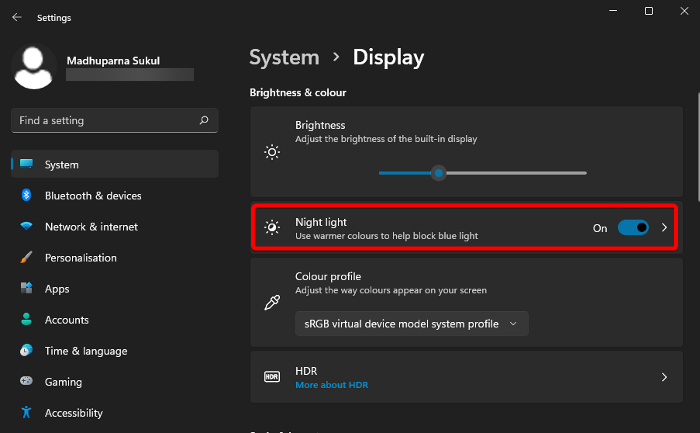
If you want to reduce your eye strain when watching a video or during gaming, tweaking the brightness settings will help you achieve your goal. A few settings to consider would be as follows:
Adaptive brightness
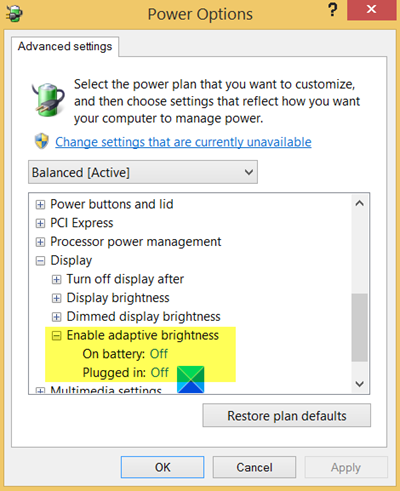
When turned on, Adaptive Brightness helps your Windows PC adjust the brightness and contrast levels automatically based on the ambient lighting conditions. Therefore, make sure you enable Adaptive Brightness.
However, since it’s a monitor-specific feature, you can enable it only if light sensors are installed on the monitor. Also, if the PC does not support the feature, you cannot enable the feature.
Night Light
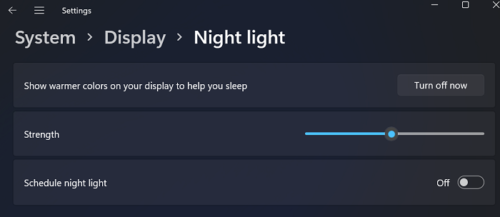
Among the other best monitor settings for your eyes would be to enable the Blue Light Filtering or Night Light feature on your Windows PC. This helps to dim your screen automatically and lowers the blue light of the monitor which in turn reduces eye strain.
For this, open Settings (Win + I) > System > Display > Turn on Night light.
Alternatively, you can use freeware like f.lux, or Eye Saver as night light alternative software.
Dark Mode
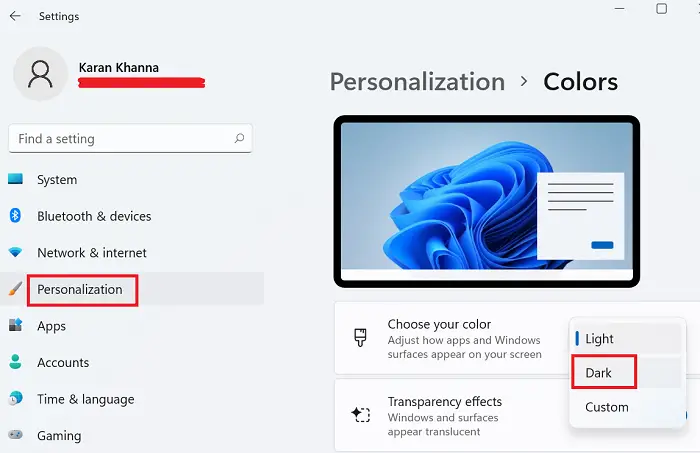
If your eyes hurt while using your PC after sunset, switching to dark mode is one of the smartest things to do.
- For this, open the Windows Settings app and click on Personalization on the left.
- Next, on the right, click on Colours.
- On the next screen, go to Choose your mode and select Dark from the drop-down.
You can change it back to light mode later by selecting Light from the same drop-down menu.
Alternatively, you can follow the suggestion in our detailed post to switch between light and dark mode automatically.
Manage the screen color temperature
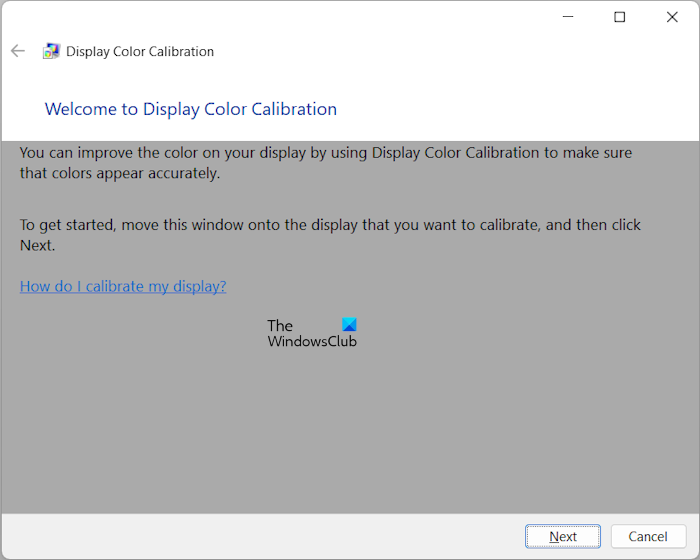
You can also change the color temperature of your monitor based on the ambient lighting conditions. For example, you can use a blue tone for brighter surroundings, and for darker surroundings, a yellow tone should be perfect.
- To manage your monitor’s color, open the Windows Settings (Win+I).
- Next, type in Calibrate display color in the search field to open the Display Color Calibration window.
- Follow the on-screen instructions to set the correct color temperature based on your requirements.
Alternatively, you can use the ScreenTemperature freeware to manage the screen color temperature.
Read:
2] Modify the contrast settings
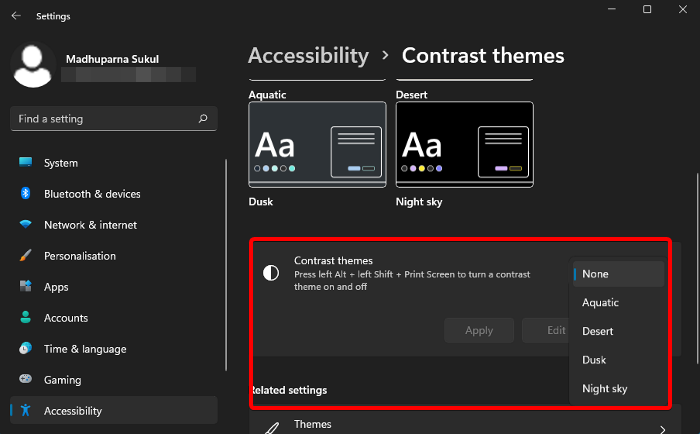
Talking about the contrast settings, you can adjust your screen’s contrast to something in between, which is not the deepest black or the most radiant white. A thumb rule is to keep your screen’s contrast to 60% or 70% to reduce eye strain.
But if you have a problem with your eyesight and you want to set a contrast that helps you read and identify easily, enable the high-contrast mode on your PC. It’s a built-in feature that helps you read anything on the monitor.
Once done, you can change the high-contrast theme back to normal if you want the settings for normal vision.
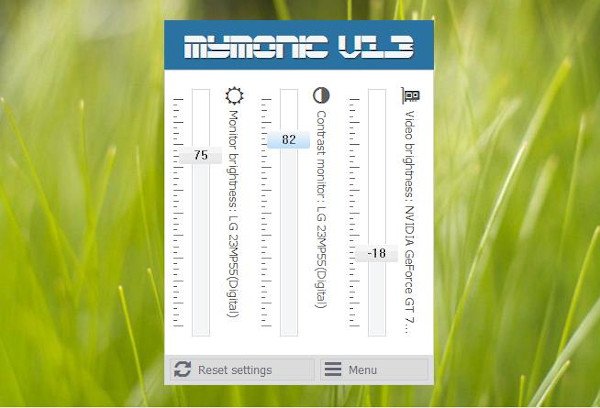
Alternatively, you can also download and install MyMonic, which is a free program to help you change the screen brightness and contrast settings easily.
Read: How to change Color Calibration, Calibrate ClearType Text in Windows
3] Other techniques to follow
Some of the other techniques you can try would be to move your monitor to an optimal eye level. Make sure that it’s neither too far nor too close that may strain your eyes. You can also adjust the height for the most comfortable view.
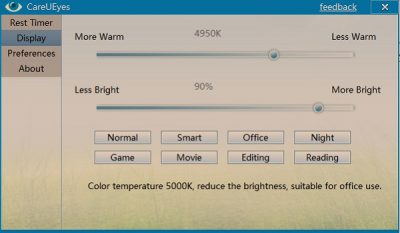
Moreover, also ensure you protect your eyes from blue-light rays by using blue-light filters. You can also use free Eye Care Software like Careueyes that comes with a blue light filter. At the same time, you should give your eyes some rest by looking away every 20 minutes.
Read: How to change the screen from black to white on Windows 11
How much brightness is good for the eyes on a PC?
Ideal screen brightness for eye comfort on a PC depends on the context. However, to minimize eye strain, you can set your display to approximately 100-150 cd/m2 in a typically lit office environment (300-500 lux). Adjusting the brightness to match ambient light conditions is key for optimal visual comfort.
What is the best color setting for a PC?
To achieve the best color settings for your PC, set your display to a color temperature of 6500 Kelvin, which simulates the natural daylight. Adjust the digital vibrance to enhance the gaming experience, but make sure you fine-tune the settings to your specific monitor and game to maintain color accuracy and prevent over-saturation.
Leave a Reply